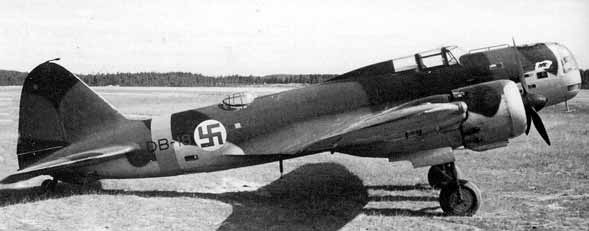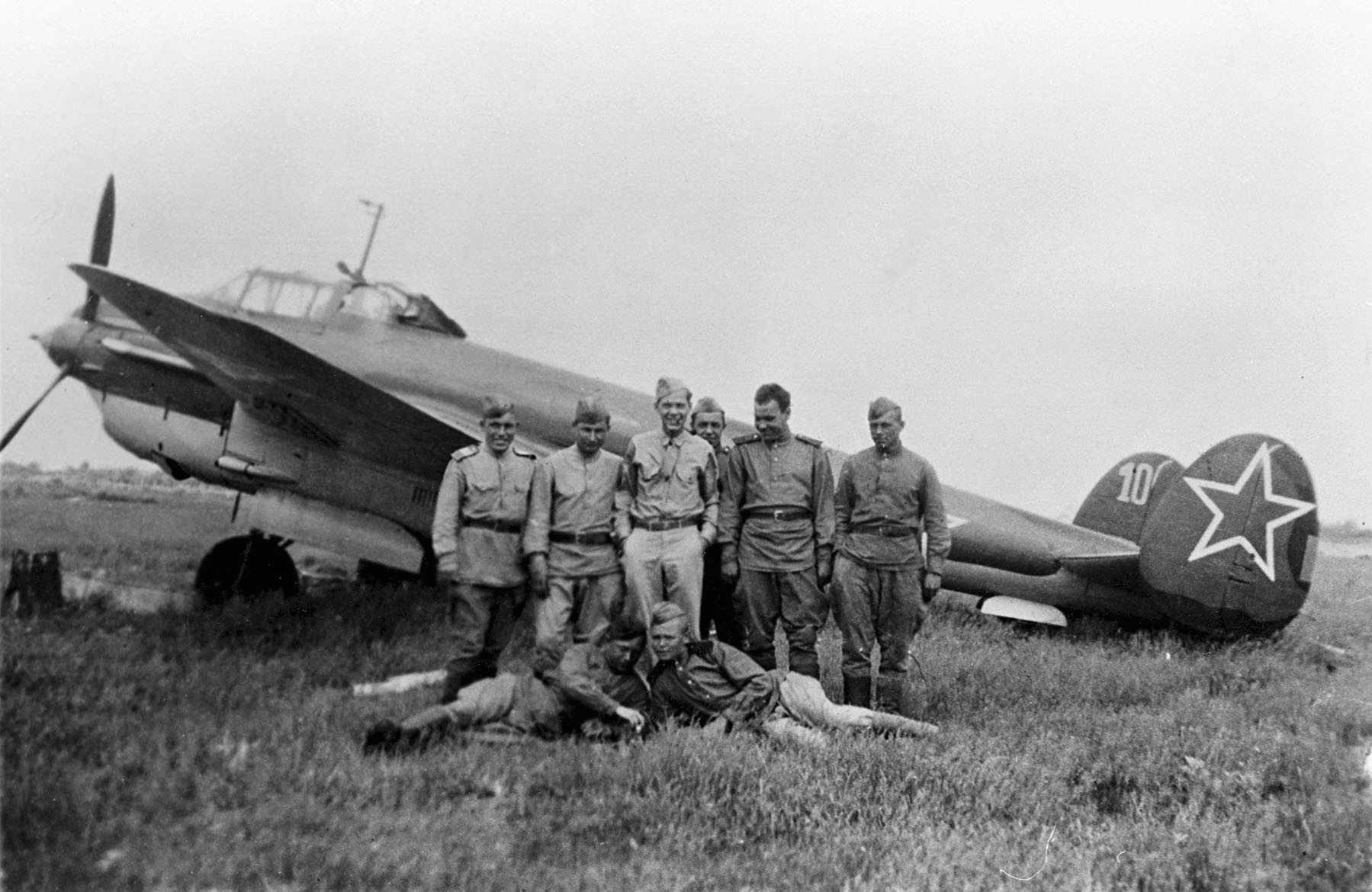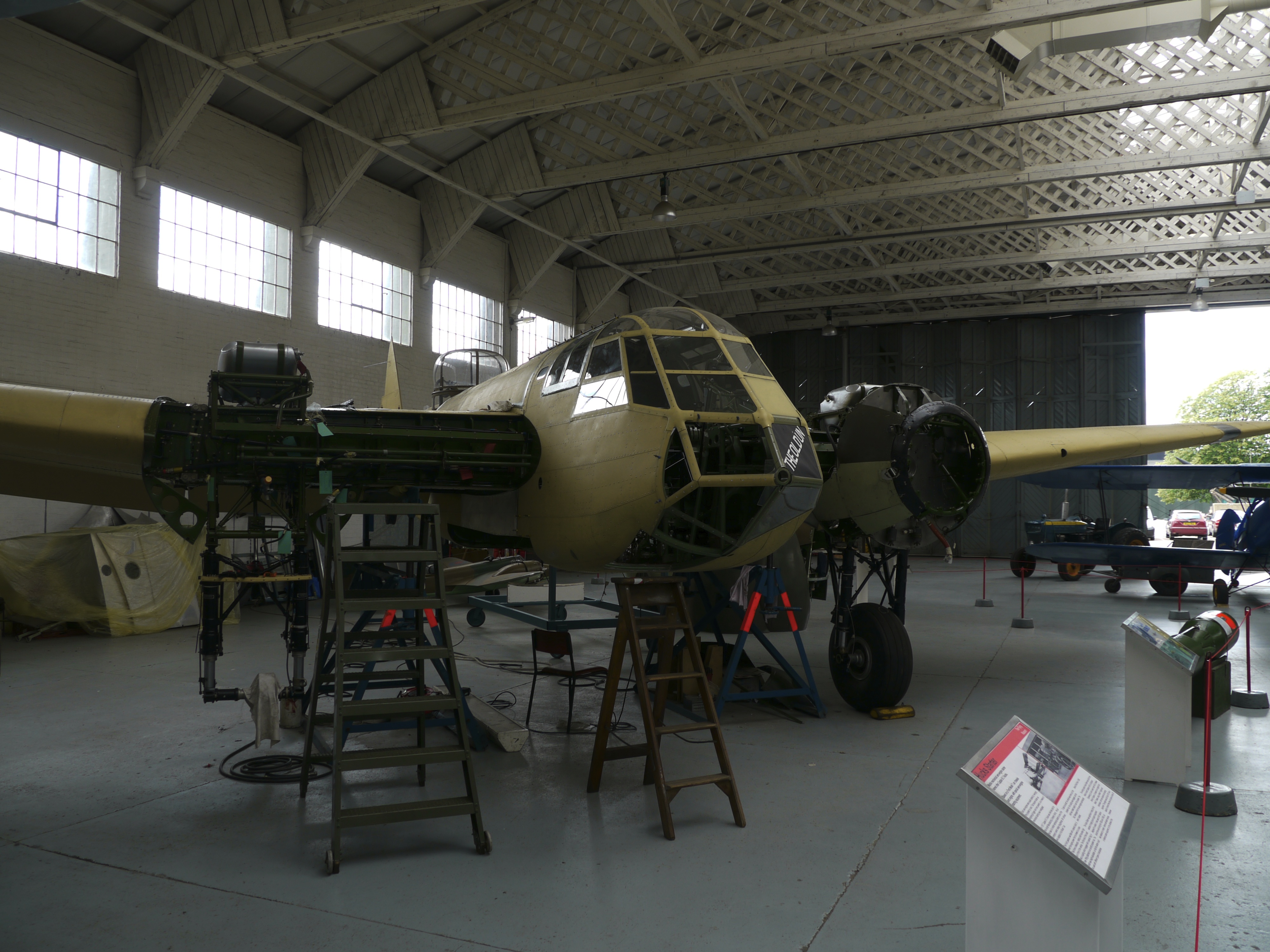|
Lentorykmentti 4
Flying Regiment 4 ( fi, Lentorykmentti 4 or ''LeR 4'') was a bomber aircraft regiment of the Finnish Air Force. The regiment was formed on 1 January 1938 and was active during the Winter War, the Continuation War, and the Lapland War. During the Winter War, the unit flew 423 war missions, of which 22 were strategic and photo reconnaissance flights with its Bristol Blenheim Mk.Is. 18 aircraft and 21 crew members were lost. During the Continuation War the regiment was re-equipped with new Bristol Blenheims Mk.IVs, German Dornier Do 17Zs, Junkers Ju 88s, and Russian Ilyushin DB-3s, and Tupolev SBs. The unit could now mount some 50 aircraft in their largest raids. More than 4,000 missions were flown during the Continuation War. 65 aircraft and 165 crew members were lost. During the Lapland War ''LeR 4'' flew 462 missions against the Germans, losing 7 aircraft and 16 crew members. Organization Winter War * No. 42 Squadron: bomber squadron * No. 44 Squadron: bomber squadron * No. 46 ... [...More Info...] [...Related Items...] OR: [Wikipedia] [Google] [Baidu] |
Winter War
The Winter War,, sv, Vinterkriget, rus, Зи́мняя война́, r=Zimnyaya voyna. The names Soviet–Finnish War 1939–1940 (russian: link=no, Сове́тско-финская война́ 1939–1940) and Soviet–Finland War 1939–1940 (russian: link=no, Сове́тско-финляндская война́ 1939–1940) are often used in Russian historiographybr>В.Н. Барышников. От прохладного мира к Зимней войне. Восточная политика Финляндии в 1930–е годы. Санкт-Петербург, 1997.; О.Д. Дудорова. Неизвестные страницы Зимней войны. In: Военно-исторический журнал. 1991. №9.; Зимняя война 1939–1940. Книга первая. Политическая история. М., 1998. – ; ttp://www.otvaga2004.narod.ru/photo/winterwar/wwar1.htm М. Коломиец. Танки в Зимней войне 19 ... [...More Info...] [...Related Items...] OR: [Wikipedia] [Google] [Baidu] |
Junkers Ju 88 A-4
The Junkers Ju 88 is a German World War II ''Luftwaffe'' twin-engined multirole combat aircraft. Junkers Aircraft and Motor Works (JFM) designed the plane in the mid-1930s as a so-called ''Schnellbomber'' ("fast bomber") that would be too fast for fighters of its era to intercept. It suffered from technical problems during its development and early operational periods but became one of the most versatile combat aircraft of the war. Like a number of other ''Luftwaffe'' bombers, it served as a bomber, dive bomber, night fighter, torpedo bomber, reconnaissance aircraft, heavy fighter and at the end of the war, as a flying bomb. Despite a protracted development, it became one of the ''Luftwaffe''s most important aircraft. The assembly line ran constantly from 1936 to 1945 and more than 15,000 Ju 88s were built in dozens of variants, more than any other twin-engine German aircraft of the period. Throughout production the basic structure of the aircraft remained unchanged.Angelucci an ... [...More Info...] [...Related Items...] OR: [Wikipedia] [Google] [Baidu] |
Avro Anson
The Avro Anson is a British twin-engined, multi-role aircraft built by the aircraft manufacturer Avro. Large numbers of the type served in a variety of roles for the Royal Air Force (RAF), Fleet Air Arm (FAA), Royal Canadian Air Force (RCAF) and numerous other air forces before, during, and after the Second World War. Initially known as the ''Avro 652A'', the Anson was developed during the mid-1930s from the earlier Avro 652 airliner in response to a request for tenders issued by the British Air Ministry for a maritime reconnaissance aircraft. Having suitably impressed the Ministry, a single prototype was ordered, which conducted its maiden flight on 24 March 1935. Following an evaluation in which the Type 652A bettered the competing de Havilland DH.89, it was selected as the winner, leading to Air Ministry Specification 18/35 being written around the type and an initial order for 174 aircraft being ordered in July 1935. The Type 652A was promptly named after British Admira ... [...More Info...] [...Related Items...] OR: [Wikipedia] [Google] [Baidu] |
Ilyushin Il-4
The Ilyushin Il-4 (DB-3F) (russian: Ильюшин Ил-4 (ДБ-3Ф)) was a Soviet twin-engined long-range bomber and torpedo bomber, widely used by the Soviet Air Force and Soviet Naval Aviation during World War II. Design and development In 1938, the Ilyushin design bureau redesigned the Ilyushin DB-3 to ease production and improve its performance, the revised version receiving the designation DB-3F (''Forsirovanniye'' or "boosted"). The aircraft's internal structure, particularly the wings, was extensively changed, eliminating the need for hand finishing of the structure, and with duralumin replacing the large scale use of steel in the earlier version.''Air International'' May 1986, p. 133.Gunston 1995, pp. 100–101. The aircraft's fuel system was redesigned, increasing its internal capacity while reducing the number of fuel tanks. The fuselage nose was lengthened to give more room for the navigator/bombardier while reducing drag. The prototype DB-3F, powered by the same Tuma ... [...More Info...] [...Related Items...] OR: [Wikipedia] [Google] [Baidu] |
Ilyushin DB-3M
The Ilyushin DB-3, where "DB" stands for ''Dalniy Bombardirovschik'' (Russian: Дальний бомбардировщик) meaning "long-range bomber", was a Soviet bomber aircraft of World War II. It was a twin-engined, low-wing monoplane that first flew in 1935. 1,528 were built. The DB-3 was the precursor of the Ilyushin Il-4 (originally designated DB-3F). Design and development The genesis of the DB-3 lay in the BB-2, Sergey Ilyushin's failed competitor to the Tupolev SB. Ilyushin was able to salvage the work and time invested in the BB-2's design by recasting it as a long-range bomber, again competing against a Tupolev design, the DB-2, to meet the stringent requirements of an aircraft capable of delivering a bombload to a range of at a maximum speed no less than . He had redesigned the BB-2 to take advantage of the radial Gnome-Rhône Mistral Major 14Kdrs engine, for which the Soviets had purchased a license in 1934 as the M-85, and had begun construction of the prototype ... [...More Info...] [...Related Items...] OR: [Wikipedia] [Google] [Baidu] |
Petlyakov Pe-2
The Petlyakov Pe-2 (russian: Петляков Пе-2) was a Soviet twin-engine dive bomber used during World War II. One of the outstanding tactical attack aircraft of the war,Ethell 1996, p. 152. it also proved successful as a heavy fighter, as a night fighter ( Pe-3 variant) and as a reconnaissance aircraft.Angelucci and Matricardi 1978, p. 234. The Pe-2 was, numerically, the most important Soviet bomber of World War II, at their peak comprising 75% of the Soviet twin-engine bomber force.Smith 2003, pp. 155. The Soviets manufactured Pe-2s in greater numbers (11,430 built) during the war than any other twin-engine combat aircraft except for the German Junkers Ju 88 and the British Vickers Wellington.Guston 1980, p. 173. Several communist air forces flew the type after the war, when it became known by the NATO reporting name ''Buck''. Development In 1937, Vladimir Petlyakov was the leader of the Heavy Aircraft Brigade at the Tupolev OKB responsible for the development of the ANT-4 ... [...More Info...] [...Related Items...] OR: [Wikipedia] [Google] [Baidu] |
Bristol Blenheim IV
The Bristol Blenheim is a British light bomber aircraft designed and built by the Bristol Aeroplane Company (Bristol) which was used extensively in the first two years of the Second World War, with examples still being used as trainers until the end of the war. Development began with the ''Type 142'', a civil airliner, in response to a challenge from Lord Rothermere to produce the fastest commercial aircraft in Europe. The ''Type 142'' first flew in April 1935, and the Air Ministry, impressed by its performance, ordered a modified design as the ''Type 142M'' for the Royal Air Force (RAF) as a bomber. Deliveries of the newly named Blenheim to RAF squadrons commenced on 10 March 1937. In service the Type 142M became the Blenheim Mk.I which would be developed into the longer Type 149, designated the Blenheim Mk.IV, except in Canada where Fairchild Canada built the Type 149 under licence as the Bolingbroke. The Type 160 Bisley was also developed from the Blenheim, but was already ob ... [...More Info...] [...Related Items...] OR: [Wikipedia] [Google] [Baidu] |
Bristol Blenheim I
The Bristol Blenheim is a British light bomber aircraft designed and built by the Bristol Aeroplane Company (Bristol) which was used extensively in the first two years of the Second World War, with examples still being used as trainers until the end of the war. Development began with the ''Type 142'', a civil airliner, in response to a challenge from Lord Rothermere to produce the fastest commercial aircraft in Europe. The ''Type 142'' first flew in April 1935, and the Air Ministry, impressed by its performance, ordered a modified design as the ''Type 142M'' for the Royal Air Force (RAF) as a bomber. Deliveries of the newly named Blenheim to RAF squadrons commenced on 10 March 1937. In service the Type 142M became the Blenheim Mk.I which would be developed into the longer Type 149, designated the Blenheim Mk.IV, except in Canada where Fairchild Canada built the Type 149 under licence as the Bolingbroke. The Type 160 Bisley was also developed from the Blenheim, but was already ob ... [...More Info...] [...Related Items...] OR: [Wikipedia] [Google] [Baidu] |
Tupolev SB
The Tupolev ANT-40, also known by its service name Tupolev SB (russian: Скоростной бомбардировщик – ''Skorostnoi Bombardirovschik'' – high speed bomber) and development co-name TsAGI-40, was a high speed twin-engined three-seat monoplane bomber, first flown in 1934. The Tupolev design was advanced but lacked refinement, much to the dismay of crews, maintenance personnel, and Stalin, who pointed out that "there are no trivialities in aviation". Numerically the most important bomber in the world in the late 1930s, the SB was the first modern stressed skin aircraft produced in quantity in the Soviet Union and probably the most formidable bomber of the mid-1930s. It was produced in the Soviet Union and was also built under license in Czechoslovakia. Many versions saw extensive action in Spain, the Republic of China, Mongolia, Finland and at the beginning of World War II against Germany in 1941. It was also used in various duties in civil variants, as tra ... [...More Info...] [...Related Items...] OR: [Wikipedia] [Google] [Baidu] |
Continuation War
The Continuation War, also known as the Second Soviet-Finnish War, was a conflict fought by Finland and Nazi Germany against the Soviet Union from 1941 to 1944, as part of World War II.; sv, fortsättningskriget; german: Fortsetzungskrieg. According to Finnish historian Olli Vehviläinen, the term 'Continuation War' was created at the start of the conflict by the Finnish government, to justify the invasion to the population as a continuation of the defensive Winter War and separate from the German war effort. He titled the chapter addressing the issue in his book as "Finland's War of Retaliation". Vehviläinen asserted that the reality of that claim changed when the Finnish forces crossed the 1939 frontier and started annexation operations. The US Library of Congress catalogue also lists the variants War of Retribution and War of Continuation (see authority control)., group="Note" In Soviet historiography, the war was called the Finnish Front of the Great Patriotic War.. Alter ... [...More Info...] [...Related Items...] OR: [Wikipedia] [Google] [Baidu] |
Ilyushin DB-3
The Ilyushin DB-3, where "DB" stands for ''Dalniy Bombardirovschik'' (Russian: Дальний бомбардировщик) meaning "long-range bomber", was a Soviet bomber aircraft of World War II. It was a twin-engined, low-wing monoplane that first flew in 1935. 1,528 were built. The DB-3 was the precursor of the Ilyushin Il-4 (originally designated DB-3F). Design and development The genesis of the DB-3 lay in the BB-2, Sergey Ilyushin's failed competitor to the Tupolev SB. Ilyushin was able to salvage the work and time invested in the BB-2's design by recasting it as a long-range bomber, again competing against a Tupolev design, the DB-2, to meet the stringent requirements of an aircraft capable of delivering a bombload to a range of at a maximum speed no less than . He had redesigned the BB-2 to take advantage of the radial Gnome-Rhône Mistral Major 14Kdrs engine, for which the Soviets had purchased a license in 1934 as the M-85, and had begun construction of the prototype ... [...More Info...] [...Related Items...] OR: [Wikipedia] [Google] [Baidu] |
Junkers Ju 88
The Junkers Ju 88 is a German World War II ''Luftwaffe'' twin-engined multirole combat aircraft. Junkers Aircraft and Motor Works (JFM) designed the plane in the mid-1930s as a so-called ''Schnellbomber'' ("fast bomber") that would be too fast for fighters of its era to intercept. It suffered from technical problems during its development and early operational periods but became one of the most versatile combat aircraft of the war. Like a number of other ''Luftwaffe'' bombers, it served as a bomber, dive bomber, night fighter, torpedo bomber, reconnaissance aircraft, heavy fighter and at the end of the war, as a flying bomb. Despite a protracted development, it became one of the ''Luftwaffe''s most important aircraft. The assembly line ran constantly from 1936 to 1945 and more than 15,000 Ju 88s were built in dozens of variants, more than any other twin-engine German aircraft of the period. Throughout production the basic structure of the aircraft remained unchanged.Angelucci a ... [...More Info...] [...Related Items...] OR: [Wikipedia] [Google] [Baidu] |

.jpg)

.jpg)





